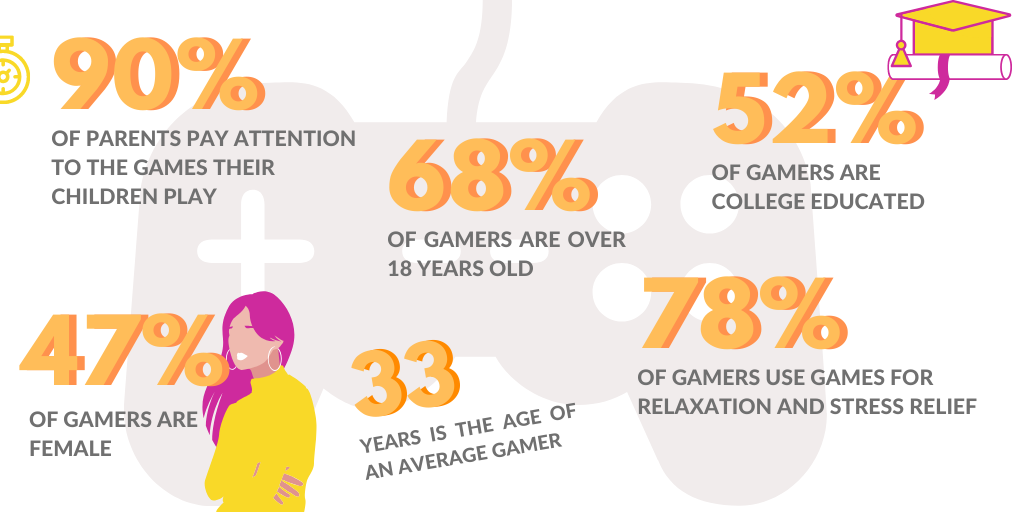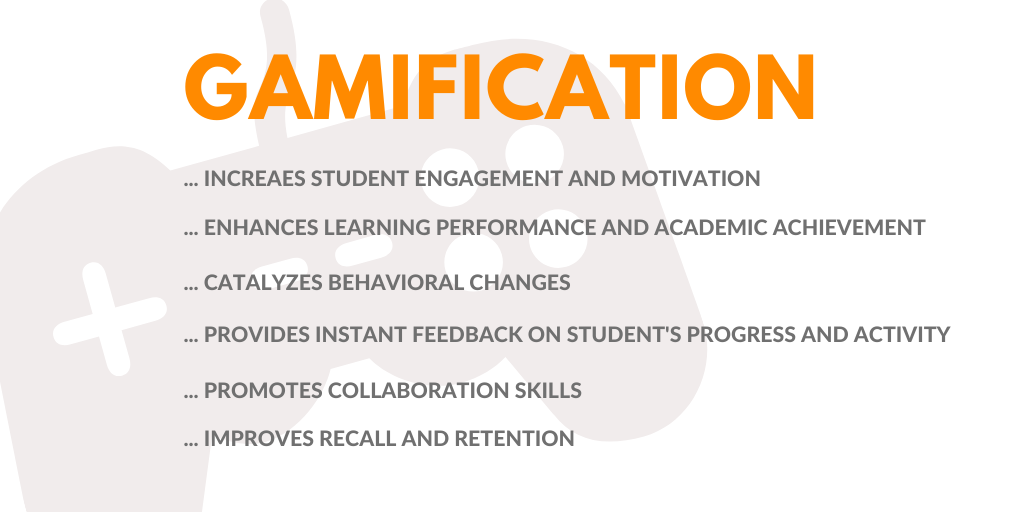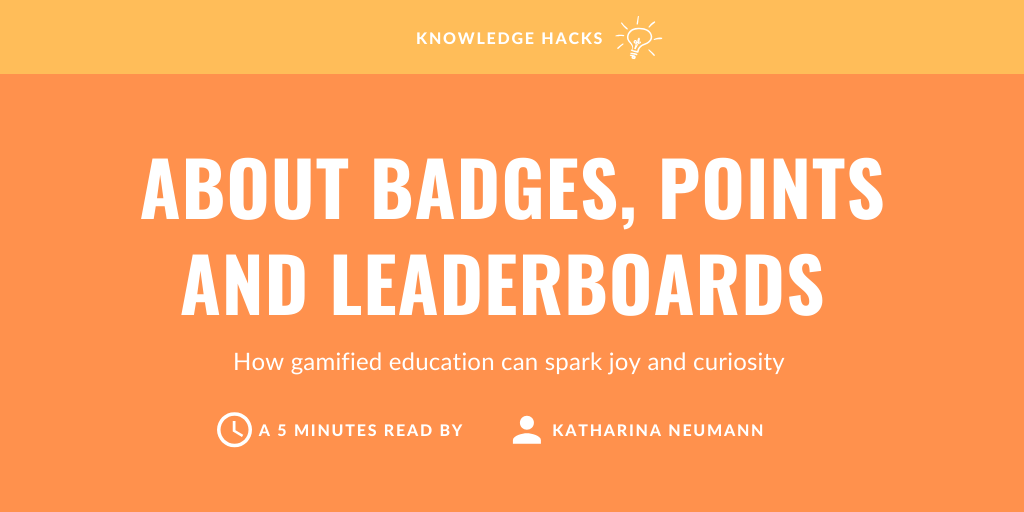Learning and knowledge go hand in hand which is why within this week’s blog post we will look at learning. No, definitely not the “old-school” approach with pen and paper, worksheets, sitting in dusty class room, listening to your history teacher for 90 minutes straight. I am talking about gamified learning. As probably everyone who is reading this post, I have spent a rather large portion of my lifetime in school: kindergarten, grammar school, middle school, high school, university and what can I say? Sometimes my personal knowledge journey was fun … and sometimes not. For most children up until the age of 10, school should be fun as learning is still driven by that inner curiosity to discover the world and stimulated by games in order to encourage playful discovery. However, as we grow older, that inner curiosity gets pushed to the back and we place our focus on other things: grades and results start mattering more. How often have we as generation Y heard, that we are disinterested? But is it really us or rather the system that doesn’t manage to spark our creativity and innovative thinking?
Insights from the gaming industry
In his TEDx Talk, Scott Herbert, a physics teacher from Canada, addresses the educational system’s engagement crisis and shows the audience how gamified teaching can bring back children’s and teenager’s joy of learning. Gamification? Huh? Isn’t that something for either 10 year olds or “post college, probably unemployed, probably living at their parent’s place” people? Let me surprise you with some facts from the American gaming industry. According to the Entertainment Software Association (Theesa, 2019), 2018 has been a record-breaking year for the gaming industry with $43,4 billion in video game sales in America. But who are the gamers that contributed to such a sales volume? In 2019, the Entertainment Software Association (ESA) released the results from an in-depth research on gamer demographics and behavior:

How gamification can spark joy and curiosity
Do you remember your favourite subject in school? For me, it was my English class, as I had two awesome teachers (shout out to Mrs. George and Mrs. Töpfer). On the other, natural sciences like physics or even biology were not too interesting for me. After all, why should a 13 year old girl be interested in electrical resistors and mitochondria? Even though some topics were not particularly interesting and most subjects were not among my favourites, I must say that certain teachers really made an effort and succeeded in making even the most boring topic exciting. And that’s where gamification can come into play. Put simply, gamification means taking certain game design principles and plunking them into areas where there is usually no game or fun.
According to Kim et al. (2017), gamification in education is needed for the one or several of the following reasons:

But why gamification? For this we have to think about the question what actually makes playing games fun? Most gamers are not motivated but the game’s outcomes but rather by the intellectual stimulating challenges it presents. Challenges, when not being too difficult, can spark creative problem-solving, motivation and student engagement. Or have you ever been motivated by a task which was too easy for you? People need the right level of difficulty and don’t want to feel sub-challenged.
Bringing gamification into a classroom can also present a challenge for educational staff. But which ways would make sense?
- Grading: students are awarded with experience points for extra-curricular activities or for mastering a certain topic of class particularly well
- Badges: Remember the little gold stars one would get in kindergarden for good behaviour? Similar to this concept, students would get badges for completed tasks and can track their personal progress by counting the collected badges
- Competition: while grades can stir up competition for the wrong reasons, a little tournament just for the fun of learning can spark student’s learning experience. A quiz or a presentation where the best groups are selected in the end can boost a classes’ energy.
Gamification is certainly not a “one fits all” solution and depending on each person’s learning preferences it might not be the right approach for everyone, but I believe it can be worth giving it a try.
What is your opinion on gamified learning? Have you experienced something like badges, quizzes and competitions within your educational journey? Let me know what you think in the comment section below.
Missed a blog post?
Readers who liked reading this article, may have also read …
- Why a 400 year old idea will take you on a modern knowledge journey
- About pyramids and snow – the difference between data, information and knowledge
- What is knowledge management and why is it important?
- About lunch with CEOs and other knowledge management techniques
- WOL, BI & Co – Four knowledge trends you need to know about
- How much knowledge is too much? About Covid-19, The Circle and Data Privacy
- From Alpha to Z: Inter- and Intragenerational Knowledge Management
- Agile and Lean Knowledge Work? A short guide to understanding agility
- Agile Tools for Collaborative Knowledge Work
Bibliography
Hebert, S. (2018). The Power of Gamification in Education. TEDxUAlberta. Retrieved on 8 May 2020 from https://www.youtube.com/watch?v=mOssYTimQwM
Holloway, S. (2018). Gamification in Education: 4 Ways to Bring Games To Your Classroom. Retrieved on 8 May 2020 from https://tophat.com/blog/gamification-education-class/
Kim, S., Song, K., Lockee, B. and Burton, J. (2017). What is Gamification in Learning and Education? Retrieved on 8 May 2020 from https://link.springer.com/chapter/10.1007/978-3-319-47283-6_4
Threesa (2019). 2019 Essential Facts About the Computer and Video Game Industry. Retrieved on 8 May 2020 from https://www.theesa.com/wp-content/uploads/2019/05/ESA_Essential_facts_2019_final.pdf




Very interesting read Katharina, a great one to close the blog posts on, Thank you for sharing!
Wow, “disinterested Millenials” I heard that statement so many times, that we don’t actually care about anything.
I agree with you, the most I learned or remember from classes are always the one where I was the most engaged by different games, scenarios or things to do rather than a traditional lecture. Teachers should definitely give it a try!
thanks for sharing your insights – indeed! Although I think teachers should also pay attention to the games themselves and their audience, so that games don’t get “silly”! 🙂
Hello Katharina,
I am already familiar with Gamification as it is a very important topic in UX Design. However it was very interesting to see it from the perspective of learning and not necessarily from a business perspective. I can only agree, gamification is fun and useful because it works, so much better than our usual engaging methods. It’s just hard to have people accept that sometimes because they think playing is silly. But it’s definitely not! So well done on raising awareness on this and let’s hope it can have some people change their ways of teaching.
See you soon,
Thanks for your positive feedback Juliette! Next week’s post will focus on a more corporate perspective, so stay tuned! 🙂
Interesting insights about the gaming industry. I was really astonished that so many gamers are female and over 30 years old. Gamification in education can definitely be an interesting approach to persuade people that even not-so-interesting topics can be fun!
Thanks for your positive feedback, Jens! Hope to see you back on the blog soon!